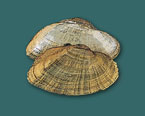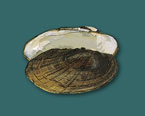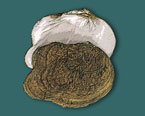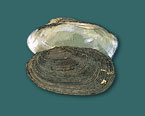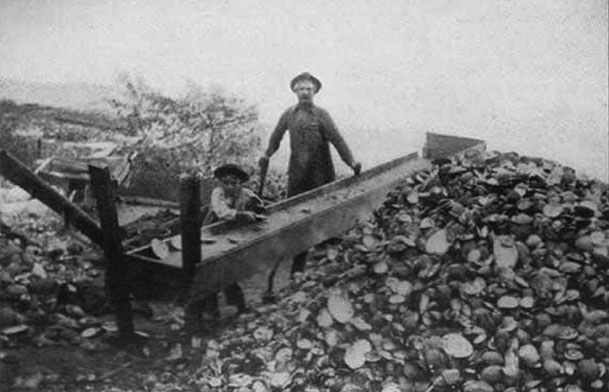
Sorting Table
Mussels and men have always been linked.
Evidence of this intimate connection can still be
seen throughout Eastern North America.
Great middens of discarded shells bear silent witness of the importance
of freshwater mussels to the early inhabitants of this continent. Used
for food, tools and ornamentation, mussels were essential to the lives
of the first people that called the banks of our great rivers home.
Later, in the early 1900's, mussel shells were transformed into buttons
for our nation's burgeoning population. The button trade developed
into an amazing footnote of America's history; factories cutting buttons
sprang up, fleets of shanty boats carried "clammers" from
one mussel bed to the next. It grew into a multi million dollar industry,
but at what a cost. The populations of our native mussels were decimated,
victims of the brief whimsey of fashion and business.
And through the years, there was always the promise of pearls. Rare,
luminous and potentially valuable, the quest for pearls hastened the
decline of many native mussel species. Today, the connection to pearl
industry continues. Tiny bits of native freshwater mussel shell are
used to "seed" saltwater oysters for pearl cultivation. At
the heart of every pearl in that elegant necklace, there exists a small
bit of North America's natural heritage.
Spectaclecases, pistolgrips, deertoes, heelsplitters, pimplebacks;
you can still hear the voices of the early clammers in the common names
of our native mussel species.
The stories mussels and men; fascinating tales that highlight our connection
with these amazing creatures.


